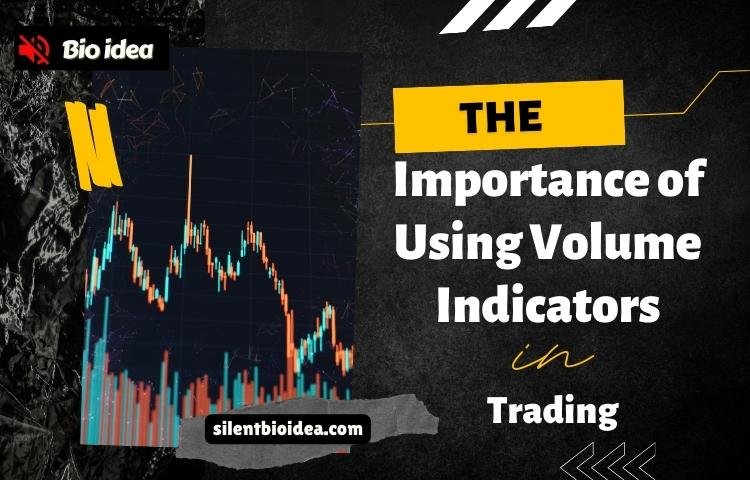The term trade in stock markets is not restricted to just exchanging shares. It also requires analysis, strategizing, prediction, and technical indicators to understand heavy market trends. Among these tools, high-end volume indicators are vital allies for traders. The volume is an easy indicator that shows how many shares have been traded throughout a set period, therefore showing the power of the market and possibly future price movements.
The understanding of volume indicators has the potential to enhance decision-making capacities, reducing risks and thereby enhancing profitability. This establishes that we will examine in this piece the key issues such as the definition of volume indicators, their varied forms, significance, and how traders can efficiently use these indicators for a trade.
What Are Volume Indicators?
Volume indicators are the technical analysis tools, which provide measures of trading activity on any particular stock, forex, or cryptocurrency market. They help traders in ascertaining whether the price movement is strong or weak.
Key Points:
- Big volume is equal to big confirmation (strengthen) of trend.
- Small volume is equal to weak trend or possible reversal.
- Spiking volume equals trend change possible.
Illustration:
If the price of a stock rises with high stock volume, this means it is backed by real buying interest. If the price goes up only with low volume, it likely means that the rise would not continue for so long.
Importance of Volume Indicators
These are some benefit traders get from trading volume indicator:





Types of Volume Indicators
There are more than a few types used by traders. Most effective ones are the On-Balance and the VWAP.
1. On-Balance Volume (OBV)
- Operates as a cumulative indicator.
- When OBV goes up, the buyers are in control.
- When OBV goes down, the sellers are in control.
2. Volume Weighted Average Price (VWAP)
- Used to assess average price based on volume.
- Preferred by institutional traders to control their entry or exit.
3. Accumulation/Distribution (A/D) Line
- This one usually measures the money movement of traders in or out of stocks.
- Rising A/D line means accumulation (buying).
- Declining A/D means distribution (selling).
4. Chaikin Money Flow (CMF)
- It delves into the prevailing purchasing or selling pressure.
- Positive CMF chalk up strong buying pressure.
- CMF can plunge into negative signals if there is strong selling pressure.
5. Klinger Volume Oscillator (KVO)
- Long-term direction monitor.
- One of the lines will help ascertain the alteration in bearish territory or an impending occurrence in bearish territory.
Using Volume Indicators in Trading
1. Confirm Trends
- Rising Prices and Increasing Volume = Strong Trend.
- Rising Prices and Decreasing Volume = Slow Trend.
2. Identify Trend Changes
- Decreasing Volume in Uptrend = Possible Reversal.
- A sudden Volume Spike = in Accordance.
3. Ascertain Breakouts and Fakeouts
- Big Volume Breakouts = True Breakouts.
- Small Volume Breakouts = Fakeouts (False Breakouts).
4. Volume and Other Indicators
- Use Moving Averages for a confirmation tool.
- Use your Relative Strength Indicator (RSI) for overbought or oversold signals.
Compiled Statistics of Volume Indicators
Here are a few statistics about volume indicators, concerning their practical usage and relevance:
- MIT Study: Stocks with high volume breakouts have an 85% chance of being continued.
- Bloomberg Data: A volume-weighted average price has been deployed by institutional traders over 70% of the time on their large trades, avoiding market impact.
- CNBC Report: 60% of retail traders go unlucky by disregarding volume indicators; they are followers of price charts alone.
- Adolescence-Crypto Market Research: 78% of bitcoin price actions, which support high volume confirmation, persist in their trends.
Common Mistakes on Volume Indicators for traders are:
- Ignoring Low Volume Moves – Trading with a lack of consideration of Volume can lead to false signals.
- Too Much Emphasis on One Indicator – It is better to combine volume with other indicators for improved accuracy.
- Misinterppreting Spikes – A spike in volume does not mean that an incipient trend is to come about; a consideration of the overall context is necessary.
- Overtrading on Volume Surges – Careful discretion needs to be given to high volume, with the price action offering some lead also.
Best Strategy to Employ Volume Indicators

- • Look out for price breakouts from the wedge supported by high volume.
- • Trade when the price holds above the resistance lines.

- • Watch out for volume decline in uptrends signaling enlarging possible reversals.
- • Use with RSI or MACD for additional confirmation.

- • Utilize the VWAP to single out major resistance and support zones.
- • Trade the price close to the VWAP for the best results.
Conclusion
Volume indicators can be seen as the keys to making adequate choices by traders. They confirm trends, facilitate the identification of breakouts, and detect changes in trends. With volume relationships, traders can confirm their own opinions with the combined fanatical building factors.
Summary Points:
- High Volume Confirms Strong Price Movements.
- Low Volume Signals Potential Trend Reversal.
- Use Multiple Indicators for Increased Accuracy.
- Don’t Make Common Mistakes and Opt for Proven Strategies.
Mastering the volume dynamics can dramatically increase trading success. Say you’re a beginner, or probably a pro, requiring volume analysis within your trading strategy would be a big shot!







